8 Low-Maintenance Landscaping Ideas for Dallas
BY KIMBERLY MAGERL | MARCH 21ST, 2023 | DALLAS, LAWN CARE, TEXASLet’s face it, your weekends are better spent cheering on your favorite team than maintaining your North Texas lawn. Whether you are an Aggie or a Longhorn, there are low-maintenance landscaping ideas that will cut down on your outdoor chores so you can get back to the “Lone Star Showdown.”
Switching to low-maintenance landscaping means less time, effort, water, weeding, mowing, and pests. In subtropical areas like Dallas, where summer temperatures can soar to well over 100 degrees Fahrenheit, energy and water conservation is important.
In this article, we’ll cover:
- Perennials: Beauty on Repeat
- Lay Down Texas Roots With Native Plants
- Mulch Your Garden Beds
- Add Sustainable Hardscaping
- Conserve Water With Xeriscaping
- Mow Less With Groundcover
- Consider No-Mow Artificial Grass
- Southern Succulents
1. Perennials: Beauty on Repeat
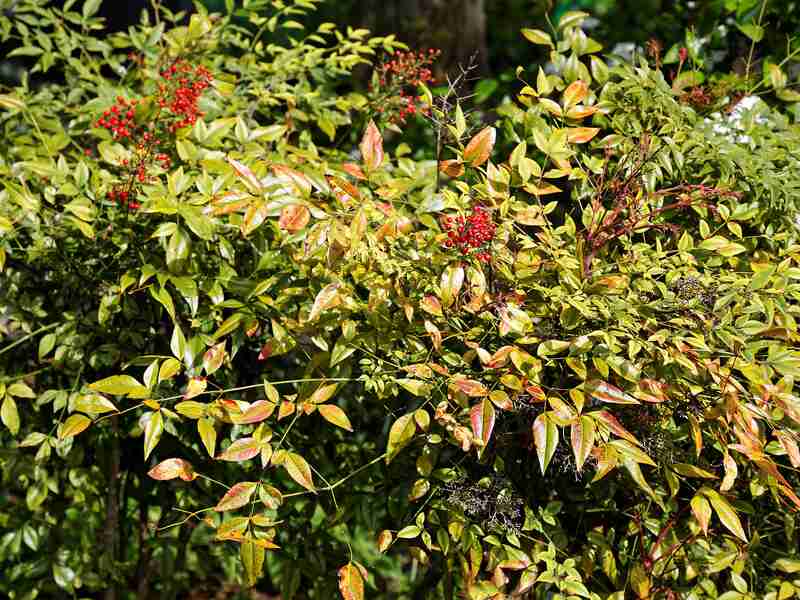
Photo Credit: Acabashi / Wikimedia Commons / CC BY-SA 4.0
The bright blooms you see as you’re strolling through your local store are annuals. These flowers are less expensive and look great, for now, lasting one growing season before dying in late fall. If bright blooms are your thing, consider switching out your annuals for drought-tolerant perennials.
Perennials have a shorter, more defined blooming season than annuals, but they survive the cold winters and bloom every year. They are more expensive upfront. However, they tolerate extreme weather and come in many varieties such as deer-resistant and shade-loving types for your urban Dallas yard.
If you are ready for landscaping beauty on repeat, check out some of the best heat-tolerant perennials for Dallas:
- Blue Princess Verbena (Verbena x hybrida)
- Bird of Paradise (Caesalpinia gilliesii)
- Shrub Verbena (Lantana camara)
- Texas Gold Columbine (Aquilegia chrysantha)
- White Rain Lily (Zephyranthes candida)
Advantages of perennials:
- Bloom yearly
- Last 10-20 years or more
- Improve soil structure
- Prevent erosion
- Water and nutrient-efficient
Estimated cost: The average cost of a perennial plant varies depending on the size and type of plant, purchase location, and whether you are having a professional handle your landscaping. If you head to your local store to purchase your own perennials, you can expect to spend between $10 to $100 per plant.
2. Lay Down Texas Roots With Native Plants
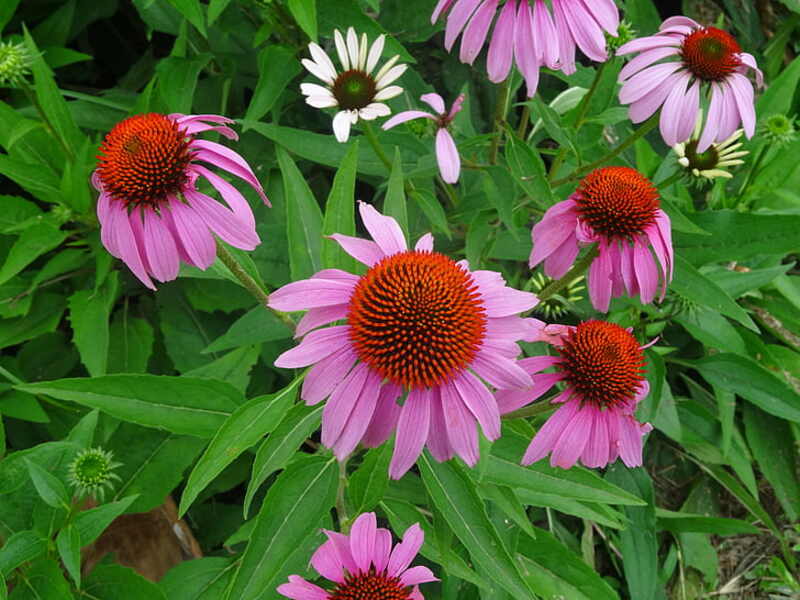
Photo Credit: Hippopx
Native Texas plants are the most low-maintenance plants you can include in your landscaping project. They promote a healthy ecosystem and thrive in the North Texas heat while remaining cold-hardy enough to survive a surprise winter snow. Native plants are hands-off and resistant to local insects and diseases.
There are many Dallas native plants to choose from. Take a look at some examples:
- Cenizo (Leucophyllum frutescens)
- Golden groundsel (Packera aurea)
- Pavonia (Pavonia lasiopetala)
- Texas bluebonnet (Lupinus texensis)
- Wine cup (Callirhoe involucrata)
Advantages of native plants:
- Thrive in Dallas-Fort Worth’s subtropical climate
- Require less water and fertilizer
- Support a diverse ecosystem, providing food and shelter for local wildlife, hummingbirds, and pollinators
- Disease and pest-resistant
Estimated cost: Like perennials, native plant prices vary widely based on many factors, including type, size, and location. On average, you can expect to spend between $15 to $50 per shrub, $5 to $50 per vine, and $200 to $1,500 per tree.
3. Mulch Your Garden Beds
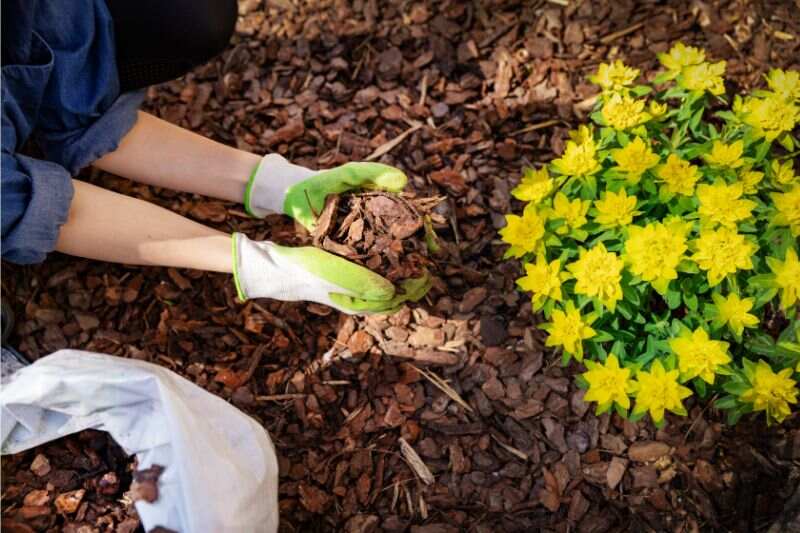
Photo Credit: ronstik / Canva Pro / License
Mulch is an inexpensive and low-effort DIY job that will provide a big payoff for your Texas landscape. It is a loose material typically made of organic matter like compost, tree bark, and wood chips. Mulch helps reduce weeds, conserve moisture, and protect your plants’ roots from heat.
Organic mulch adds beneficial nutrients to the soil as it decomposes. Inorganic mulches like rubber and gravel are more low-maintenance and durable but do not offer additional nutrients. It is important to note that organic mulches like wood chips must be replaced each year with a fresh layer.
Some examples of mulch are:
Organic mulch:
- Hardwood and softwood chips
- Bark
- Pine needles
- Leaves
- Grass clippings
Inorganic mulch:
- Rock, stone, lava rock
- Rubber mulch
- Landscape fabric
Advantages of mulch:
- Increases moisture retention
- Reduces weeds
- Protects plant roots from extreme heat
- Adds curb appeal
Estimated cost: According to Lowes and Home Depot, wood mulch costs between $3 to $5 per 2-cubic-foot bag. Rubber mulch is more durable and expensive, costing around $8 to $10 per 0.8-cubic-foot bag. If your landscaping project requires a lot of mulch, you can often purchase it in bulk to save money.
4. Add Sustainable Hardscaping
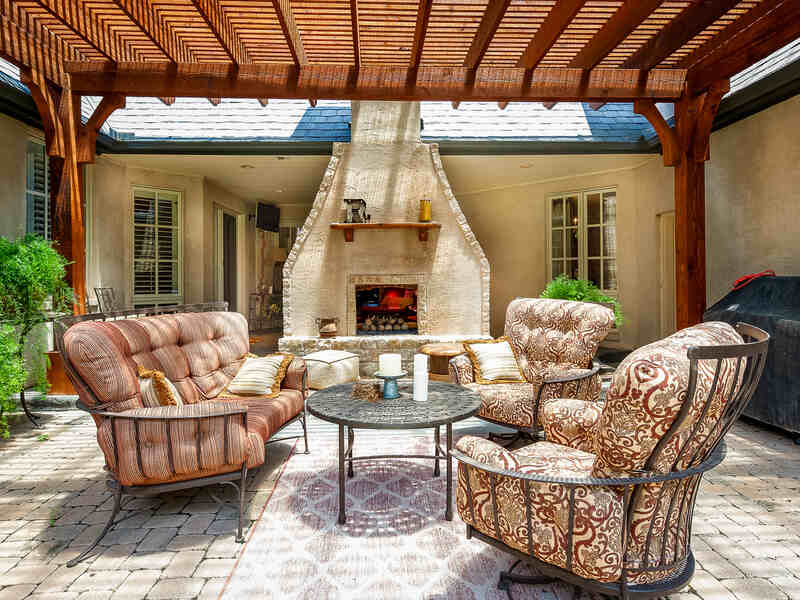
Photo Credit: Bill Wilson / Flickr / CC BY 2.0
Texas summers are hot, and there’s nothing more you want to do than relax at your backyard barbecue with a refreshing frozen margarita. The fewer plants in your landscaping design, the less time you will spend maintaining your lawn and garden. Consider hardscaping your backyard to add sustainable visual interest while eliminating the need for weekly maintenance.
Hardscapes are man-made features, including:
- Decks
- Patios
- Pergolas
- Garden paths
- Decorative stones
- Fire pits
- Rock gardens
- Water features
For the most part, hardscapes are a set-it-and-forget-it choice for garden design. They don’t require watering, pruning, or mowing. In fact, they don’t require maintenance at all except for an annual cleaning. Hardscapes are an expensive upfront investment, but they increase home value and curb appeal, saving you time and money in the long run.
Advantages of hardscapes:
- Only require annual cleaning
- Increase property value
- Add entertaining and outdoor living space
- Water-efficient
- Reduce soil erosion
- Boost curb appeal
Estimated cost: Be prepared to spend around $7,500 for a new deck, $4,000 for a patio, $850 for a fire pit, and $3,000 for a flagstone walkway.
5. Conserve Water With Xeriscaping
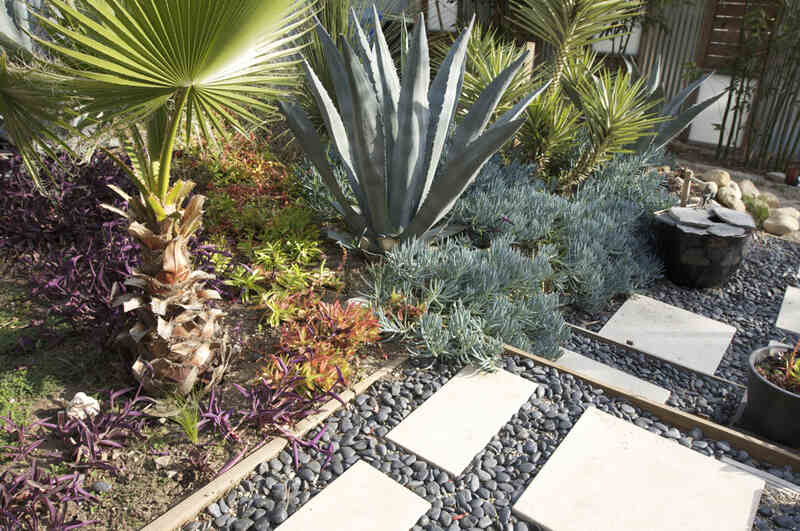
Photo Credit: Jeremy Levine / Flickr / CC BY 2.0
Like hardscaping, xeriscaping focuses on low-maintenance landscaping and water conservation. In the U.S., landscape irrigation makes up nearly one-third of all residential water use. Xeriscaping involves creating a beautiful home landscape that requires no watering except rainfall.
Dallas native plants are a great water-wise option for xeriscaping your yard. They are naturally drought resistant and adapted to harsh Texas summers. Besides native plants, some basic steps for xeriscaping your yard include:
- Plan and hydrozone your landscape by grouping plants with similar water needs together
- Mulch your flower beds for maximum water retention
- Install smart irrigation with a rain sensor, drip lines, and automatic sprinklers
- Minimize turfgrass area
- Blend hardscaping elements into your landscape
Advantages of xeriscaping:
- Conserves water
- Lowers water bills
- Reduces runoff
Estimated cost: Professional xeriscaping costs between $5 to $20 per square foot, depending on many factors like plant selection and the size of your yard. While upfront costs may seem high, you will be saving around $0.36 per square foot annually on water and maintenance costs.
6. Mow Less With Groundcover
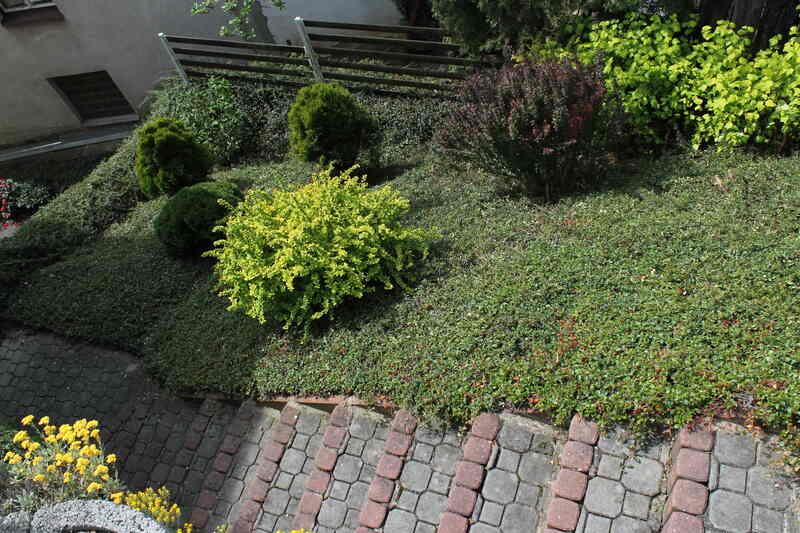
Photo Credit: I.Sáček, senior / Wikimedia Commons / CC0 1.0
Who says your entire yard has to be covered in traditional grass for a thick, green appearance? Low-maintenance groundcover makes a great alternative to traditional turfgrass. Groundcover plants grow a few inches tall and spread quickly to fill horizontal space.
Groundcover can fill areas of your lawn to mimic “grass,” while their low-maintenance attitude means less work for you. These plants still require water and the occasional fertilizer, but selecting a native Texas groundcover will ensure your new “grass” is hardy, drought tolerant, and best of all, low maintenance.
Check out these popular Dallas groundcovers:
- Golden groundsel (Packera aurea)
- Red Yucca (Hesperaloe parviflora)
- Texas Sage (Leucophyllum frutescens)
Advantages of groundcovers:
- Conserve water
- Pest resistant
- No mowing required
- Fewer weeds
Estimated cost: According to Dallas landscaping experts, Eco Blossom Nursery, groundcover plants cost around $5 to $50 each, depending on size.
7. Consider No-Mow Artificial Grass
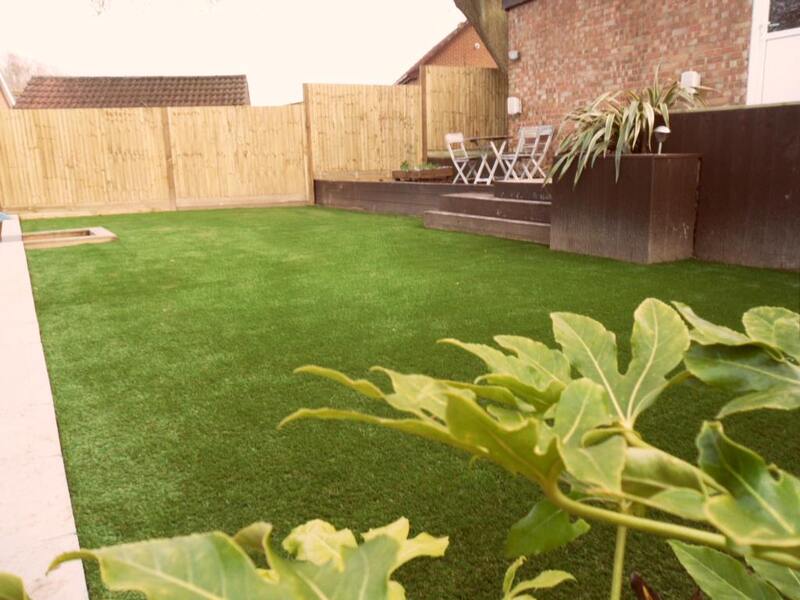
Photo Credit: Perfect Grass / Flickr / CC BY 2.0
Channel your inner Brady Bunch with artificial turf. Contrary to popular belief, this synthetic grass is eco-friendly, comes in a variety of colors and styles, and is essentially an outdoor carpet. Thanks to technological advancements, it is hard to tell fake grass from real grass in most cases.
Artificial grass is virtually maintenance-free. However, it is expensive to install and may render your soil unusable in the future.
Advantages of artificial grass:
- No maintenance other than occasional cleaning
- Pest free
- Reduces water consumption
Estimated cost: Professional artificial grass installation costs between $5 to $20 per square foot.
8. Southern Succulents
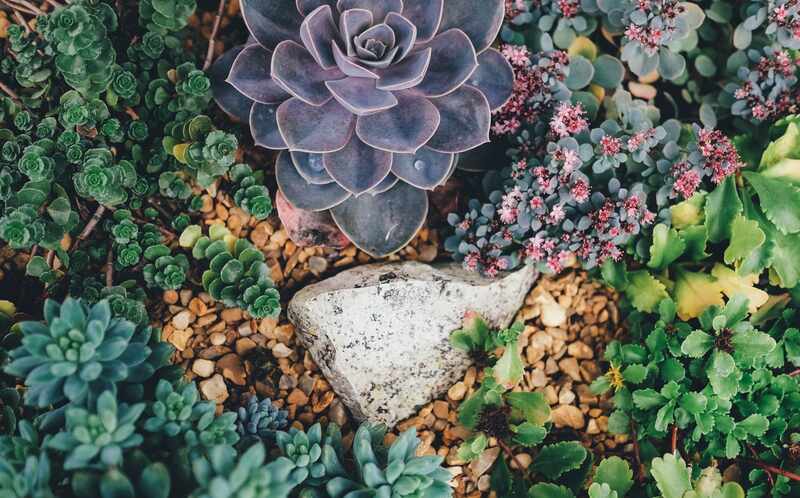
Photo Credit: Pxhere
Dallas natives love their Cowboys and Tex-Mex. If you would rather spend more time perfecting your brisket tacos and less time maintaining your yard, consider planting drought-resistant succulents like cacti or agaves.
Succulents love dry, arid climates and thrive in the Texas climate thanks to their thick leaves. They prefer to be left alone, so you can forget about watering your plants and let nature take over. Succulents come in a variety of shapes and sizes and work great in back and front yards.
Check out these popular succulents that are great for Dallas yards:
- Echeveria (Echeveria elegans)
- Parry’s Agave (Agave parryi)
- Santa Rita Prickly Pear (Opuntia santa-rita)
- Tree Houseleek (Aeonium)
Advantages of succulents:
- Drought-resistant
- Diverse shapes and sizes
- Adaptable
Estimated cost: The price depends on the size and type of succulent and ranges from $10 to $75 per plant.
FAQ About Low-Maintenance Dallas Landscaping
Organic mulch provides moisture retention and nutrients for your plants. Experts recommend laying new mulch on top of your existing mulch annually in the spring after the last frost.
Succulents thrive in the Dallas-Fort Worth area. Typically, water your succulent plants once per week when it has not rained.
There are many types of artificial turf, including pet-friendly turf, that are specially designed for your furry family members to be stain and odor resistant and easy to clean.
Professional Dallas Landscape Maintenance
Low-maintenance landscaping is the first step to reclaiming your weekends. Unfortunately, low maintenance doesn’t mean no maintenance, and you will still find yourself stuck outside in the blistering sun.
Instead of wasting your time on lawn maintenance, consider letting Wikilawn hook you up with a local landscaping company that can handle all of your lawn care needs so you can get back to Margarita Mile.
Main Image Credit: Rachel Kramer / Flickr / CC BY 2.0